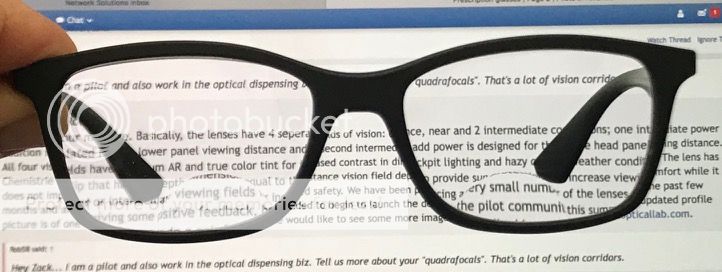Zachary Mason
Filing Flight Plan
- Joined
- May 21, 2018
- Messages
- 3
- Display Name
Display name:
QuestOpticalLab
Hey Zack... I am a pilot and also work in the optical dispensing biz. Tell us more about your "quadrafocals". That's a lot of vision corridors.
Good afternoon Rob,
Thank you for your message. Basically, the lenses have 4 seperate fields of vision: distance, near and 2 intermediate corrections; one intermediate power addition is calculated for the lower panel viewing distance and the second intermediate add power is designed for the above head panel viewing distance. All four visual fields have premium AR and true color tint for increased contrast in dim cockpit lighting and hazy outside weather conditions. The lens has a Chemistrie G15 clip that has the depth dimension equal to the distance vision field depth to provide sun protection and increase viewing comfort while it does not impair near or intermediate viewing fields for increased safety. We have been producing a very small number of the lenses over the past few months and after receiving some positive feedback, have decided to begin to launch the design to the pilot community this summer. My updated profile picture is of one of the pilots we made a pair for. If anyone would like to see some more images, my email address if zmason@questopticallab.com.
Hey Zack... I am a pilot and also work in the optical dispensing biz. Tell us more about your "quadrafocals". That's a lot of vision corridors.



